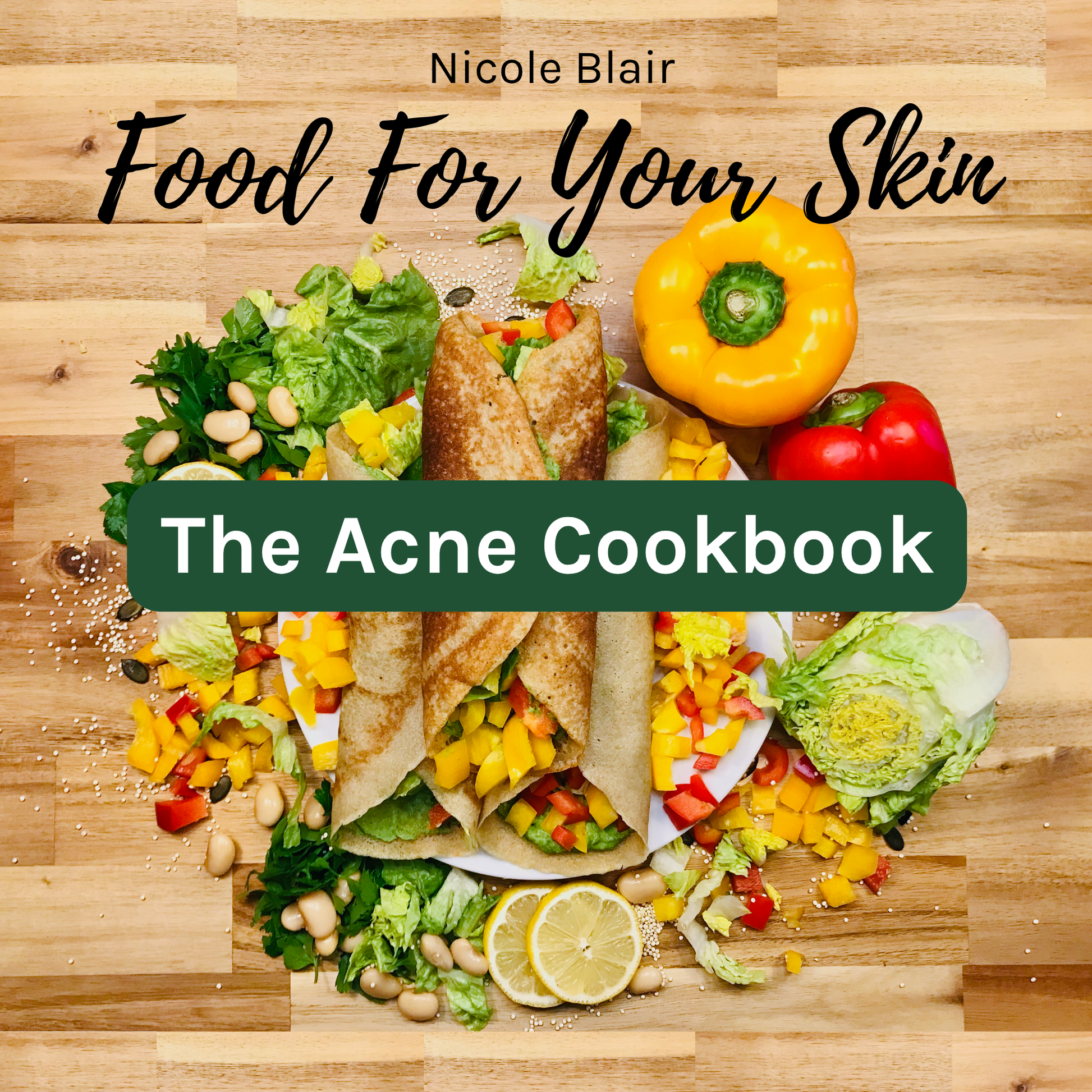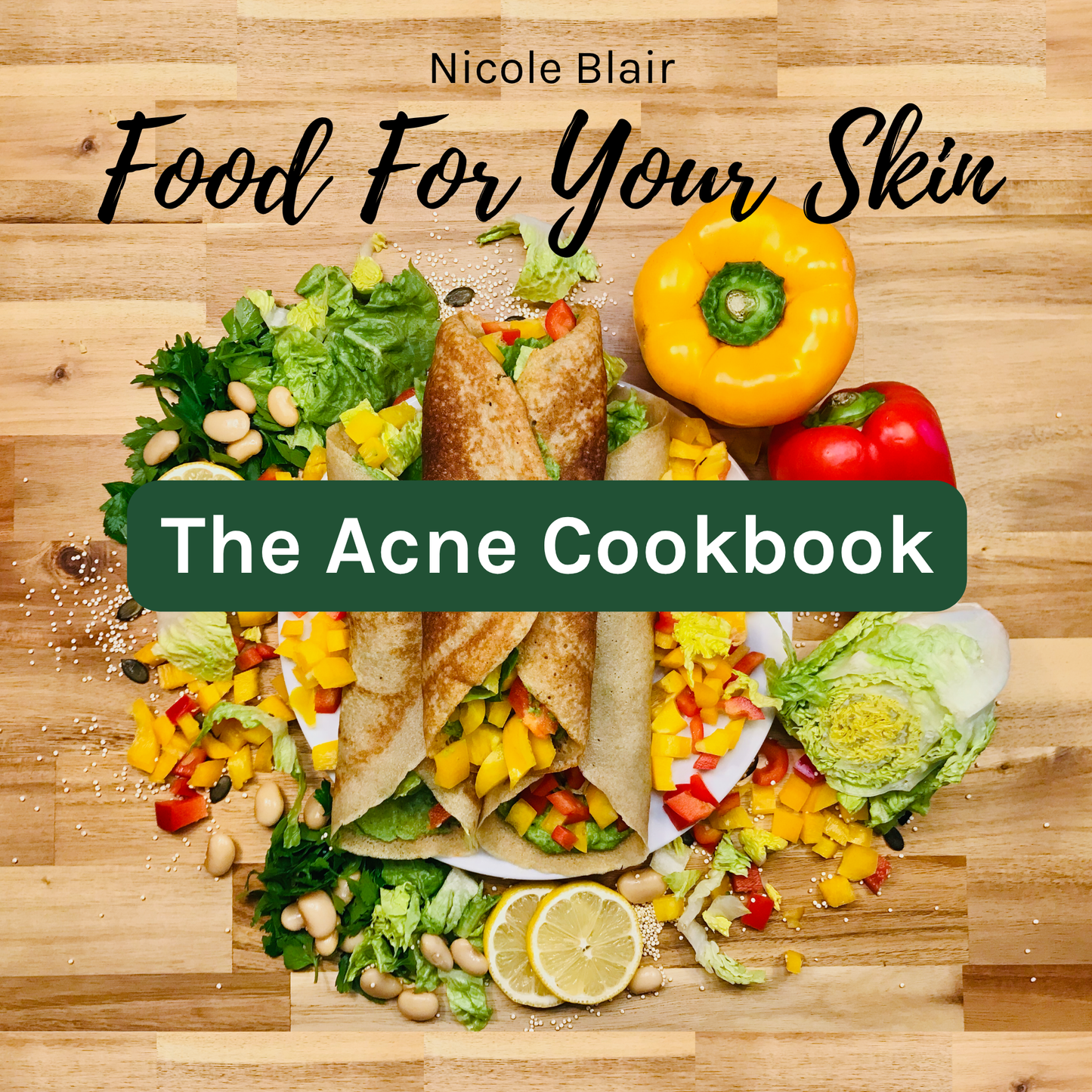
Why choose a special cookbook for acne?
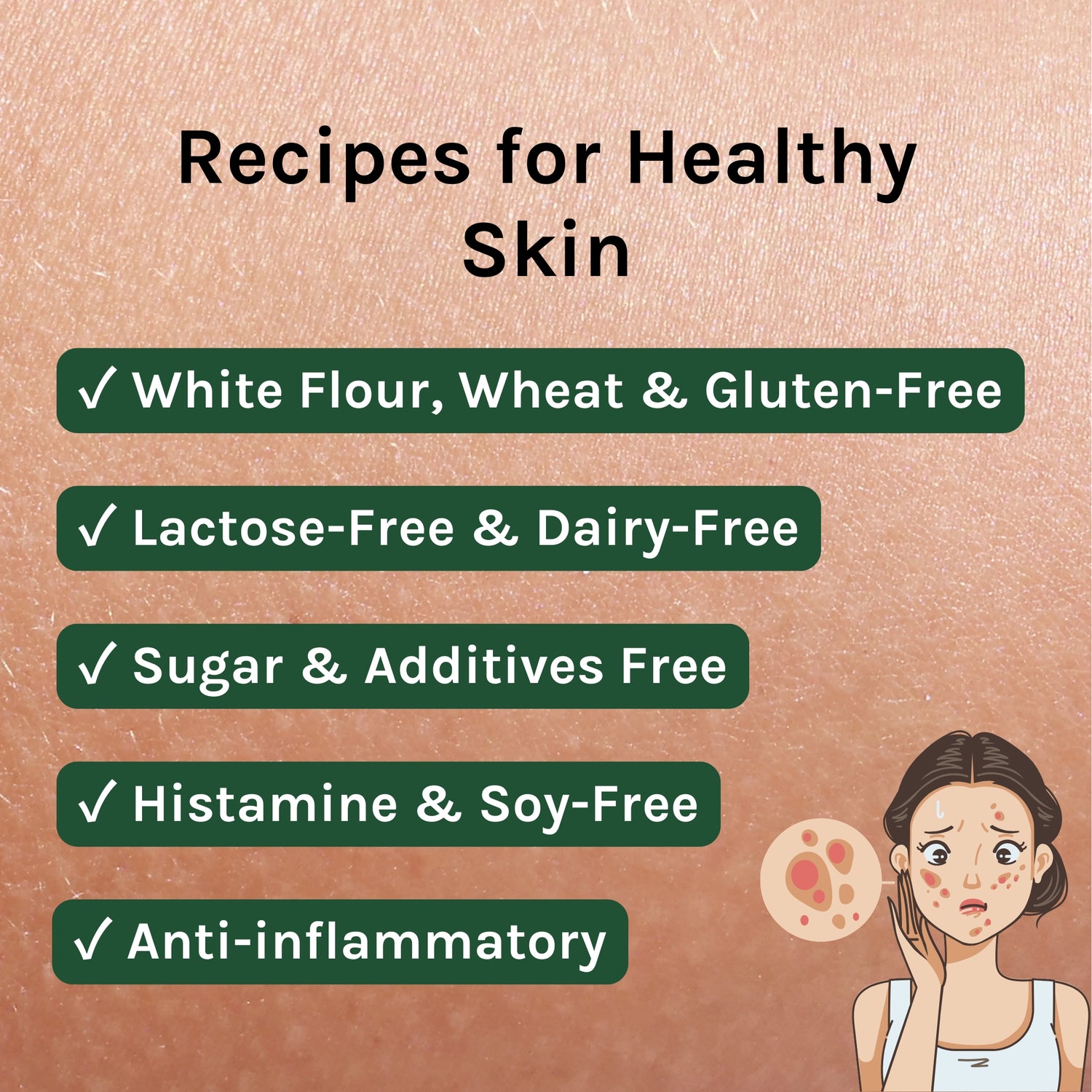
The most common dietary triggers for acne include lactose and dairy products, sugar, white flour, wheat and gluten, soy, and histamine. Hormones, antibiotics, and heavy metals in animal foods can also cause skin issues.
The 53 recipes in the book avoid all these ingredients and are anti-inflammatory, vegan, sugar-free, gluten-free, and low in histamine.
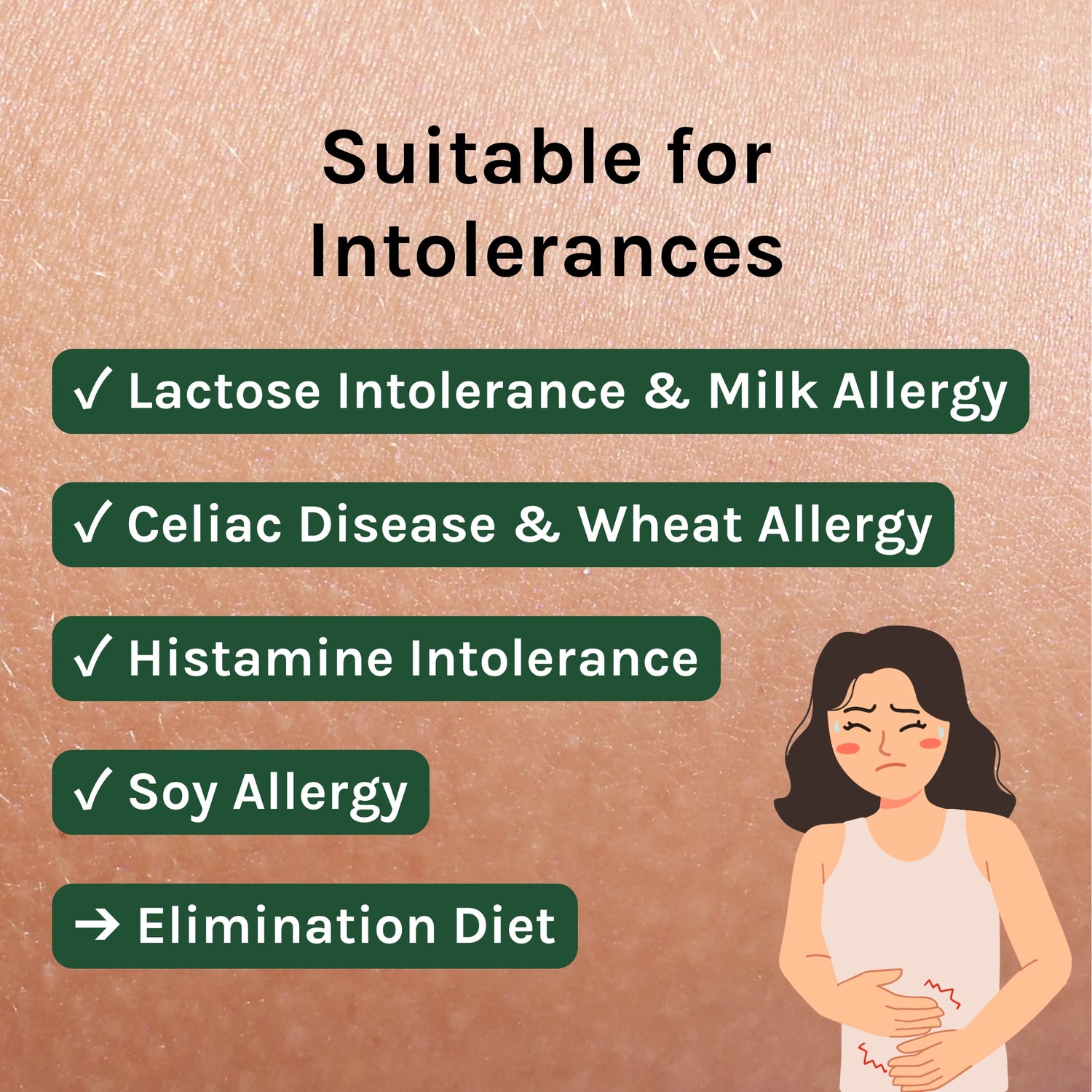
All recipes are suitable for people with lactose intolerance, milk allergy, egg allergy, celiac disease, wheat allergy, gluten sensitivity, histamine intolerance, and soy allergy.
Many cookbooks for various intolerances are now on the market, but this cookbook also avoids animal products, gluten, histamine, and soy. It is therefore perfect for an elimination diet.
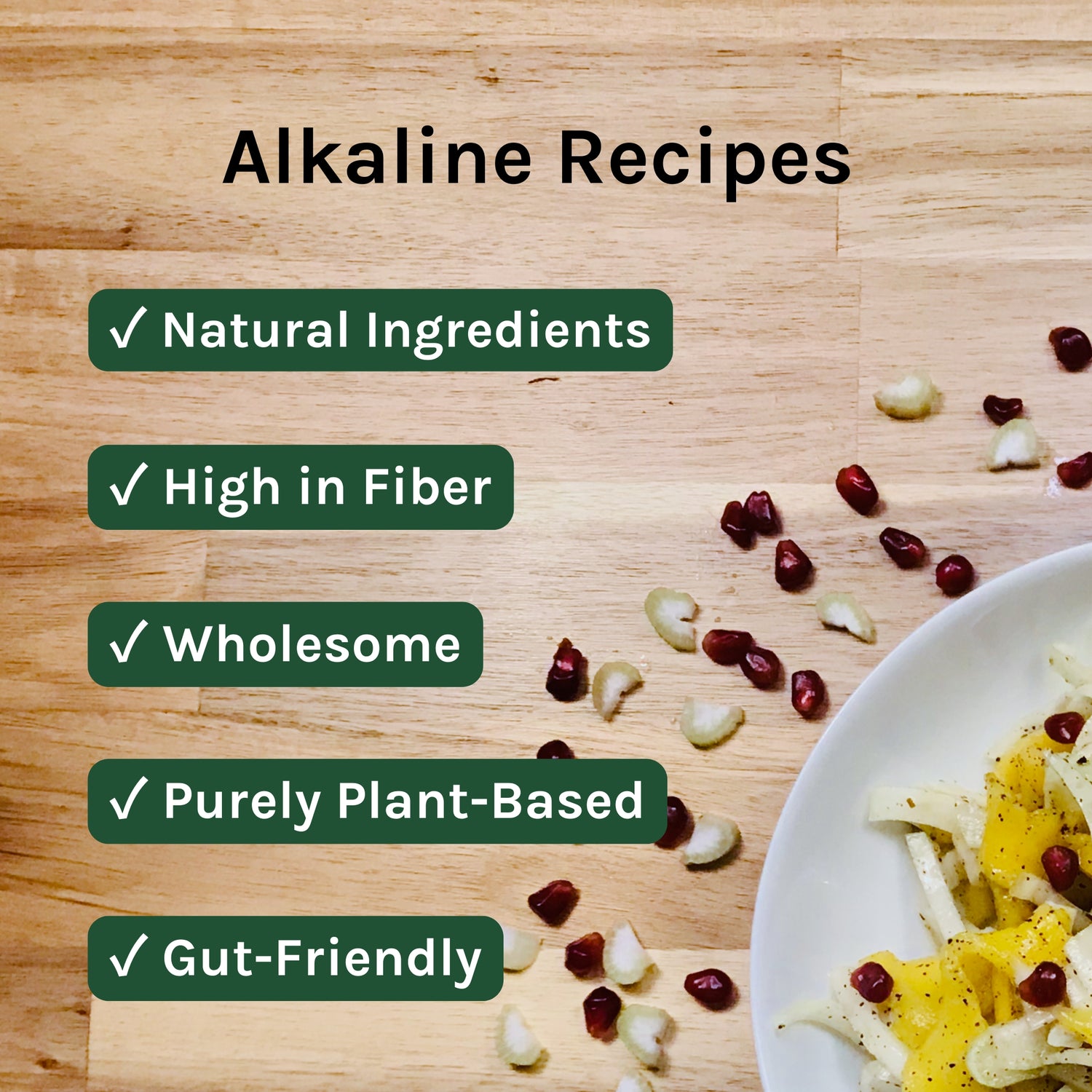
The recipes are alkaline, wholesome, high in fiber, and especially gut-friendly. They do not include any vegan substitutes or pre-made products.
The purely plant-based recipes are made with natural ingredients like fruits, vegetables, salads, sprouts, pseudo-cereals, legumes, seeds, and nuts.
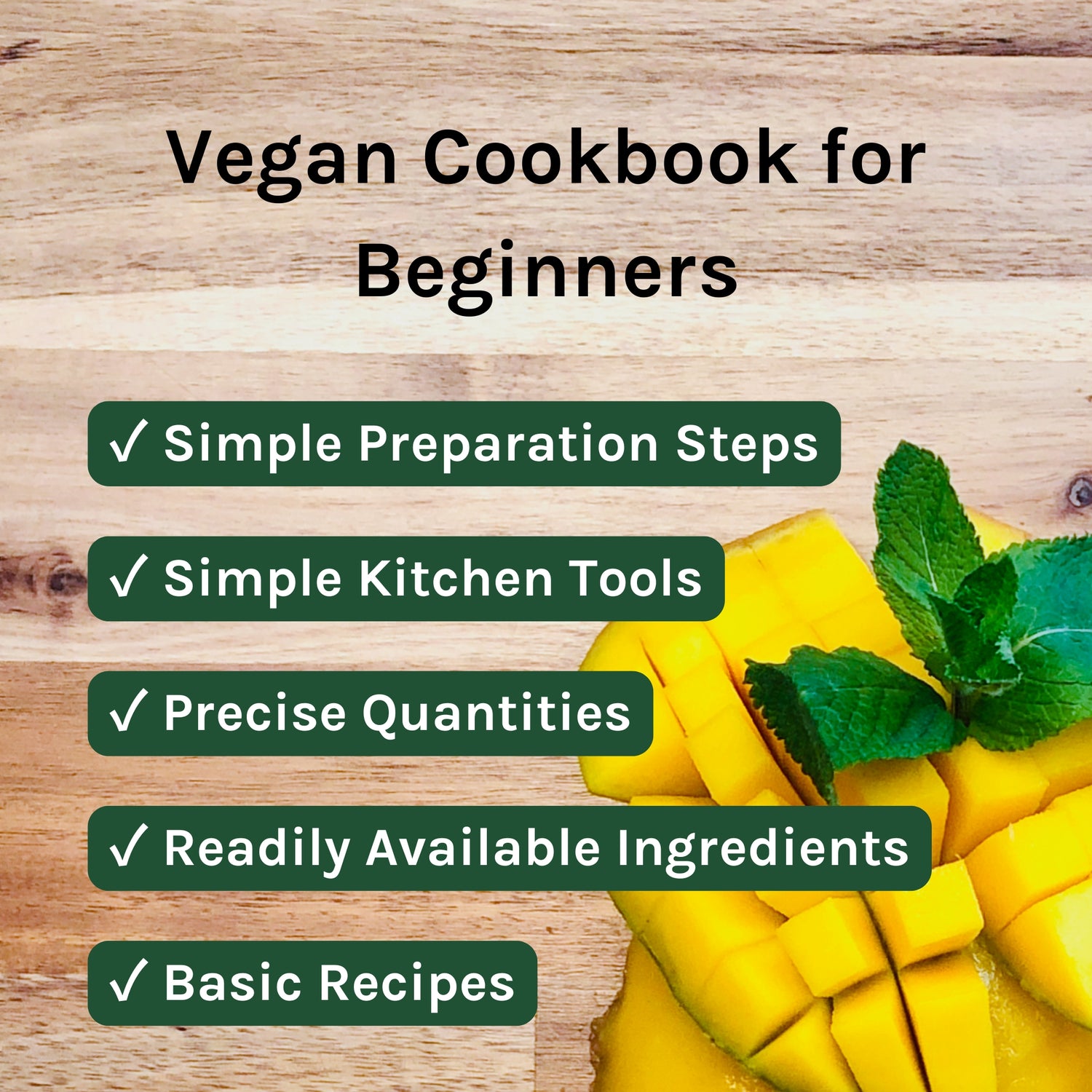
All recipes include detailed preparation instructions, straightforward descriptions, and exact measurements, such as salt and pepper. The ingredients can be easily found at your local supermarket or health food store.
The necessary kitchen utensils are listed at thebeginning of each recipe and are standard equipment for most dishes. The cookbook also includes several basic recipes, such as for making your own spice and flour blends.
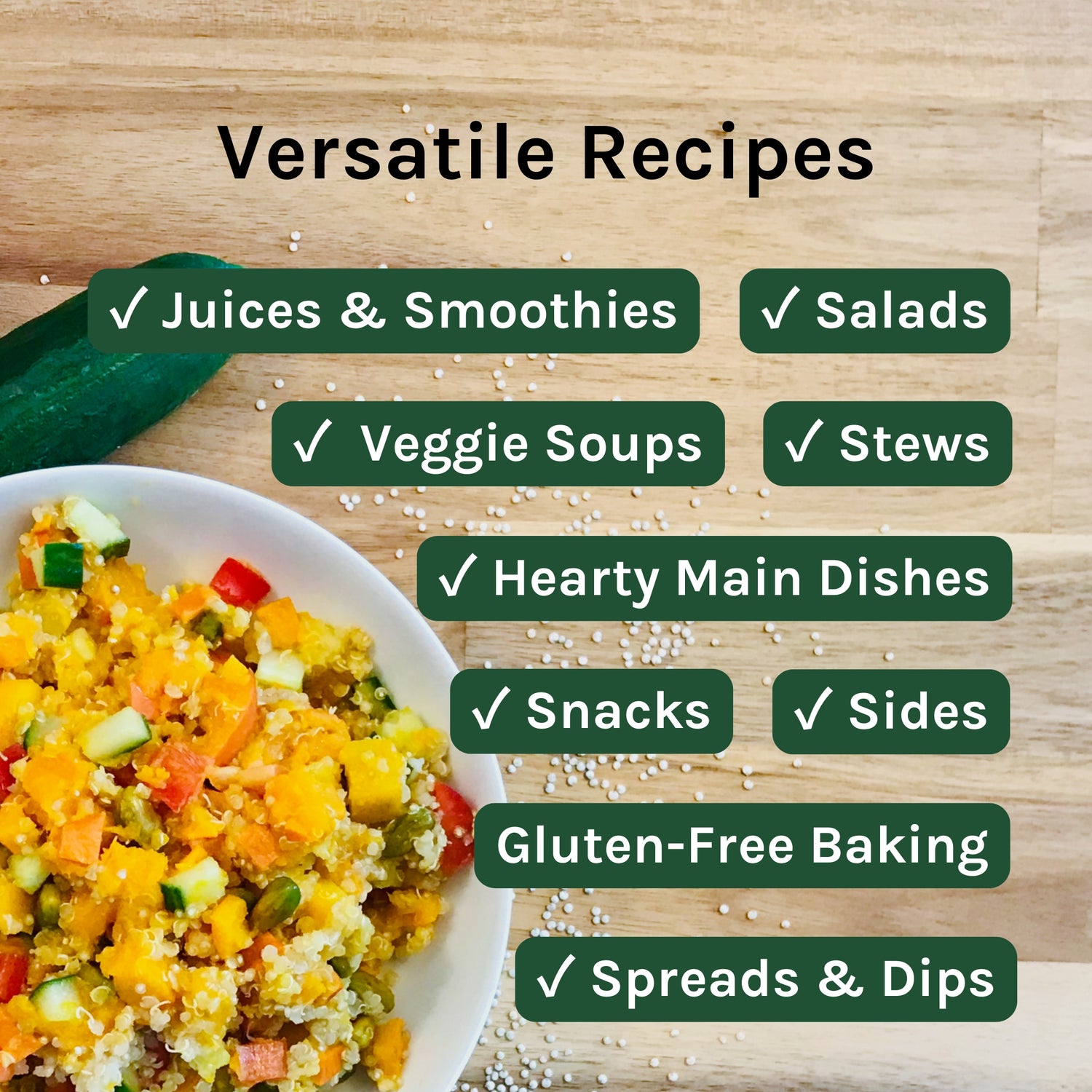
Whether for breakfast, lunch, dinner, or a snack between meals, this cookbook provides a variety of delicious recipes. It is organized into the following sections: juices & smoothies, salads, alkaline vegetable soups, stews, main courses, side dishes, snacks, gluten-free pastries, spreads & dips, and basic recipes.
Endorsed by alternative practitioners:
What other customers say:
You can look forward to these tasty recipes and many more:
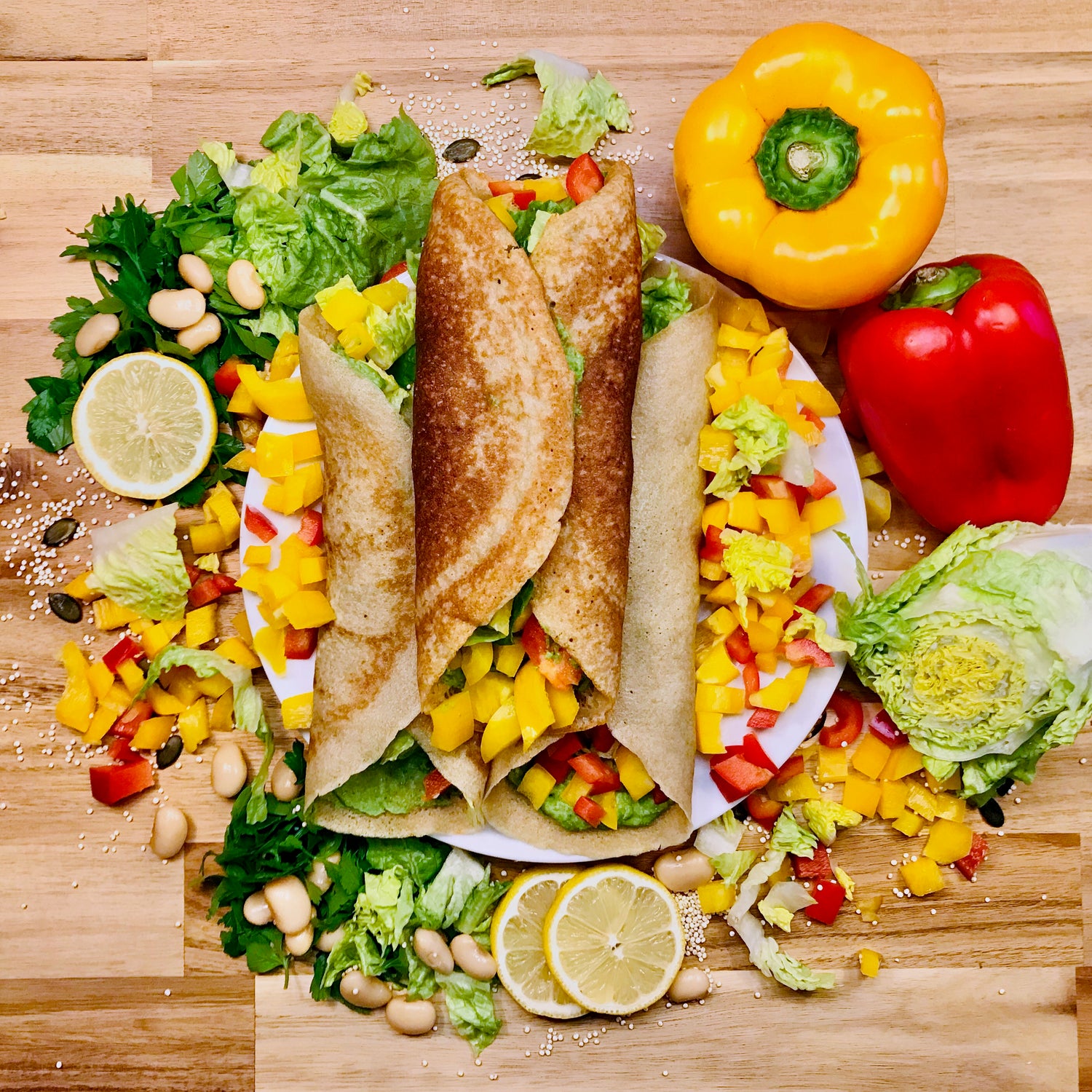
Hearty Main Courses
Quinoa Wraps with Vegetable Filling
Make your own gluten-free quinoa wraps and enjoy them with a tasty parsley, bean cream, and vegetable filling!
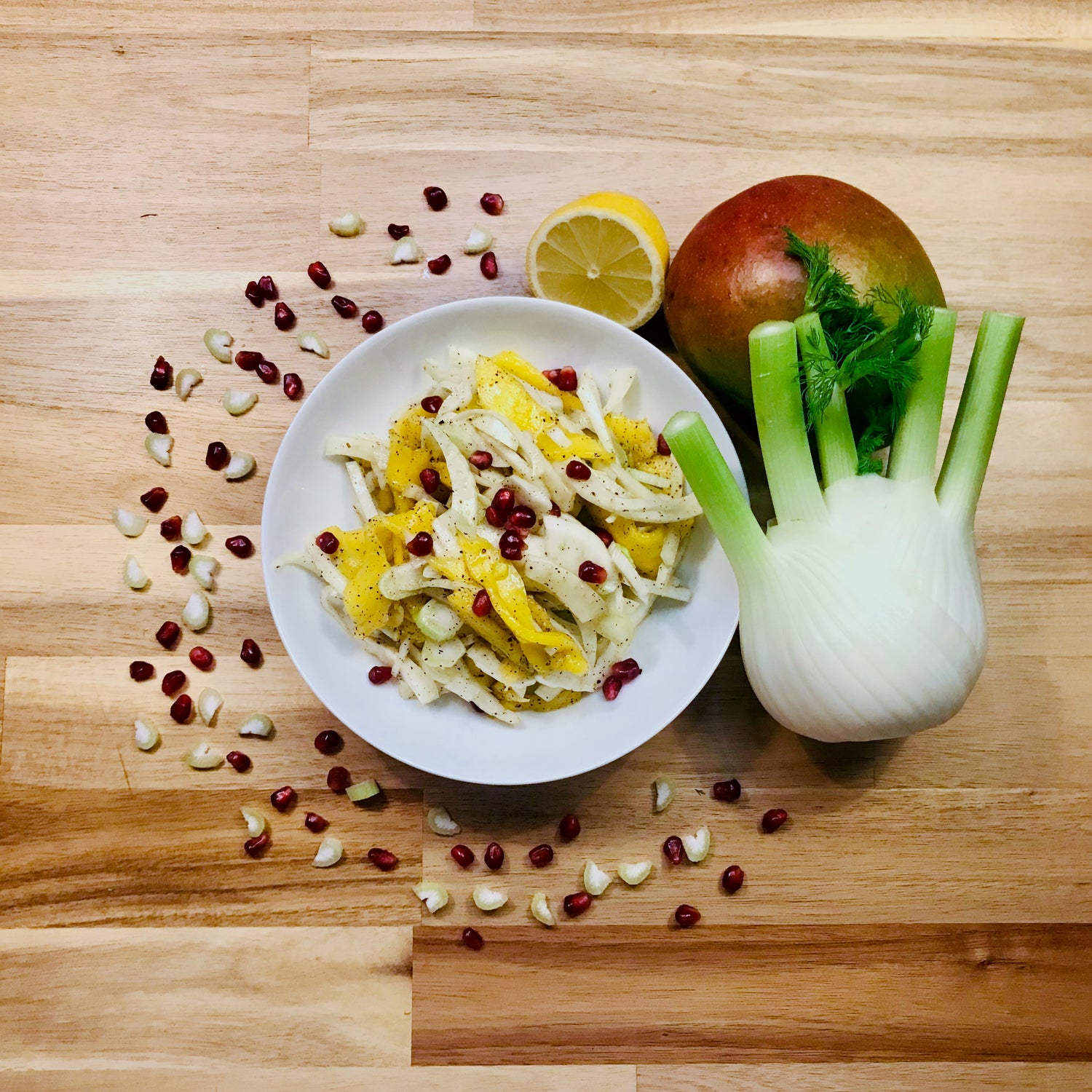
Salads
Fennel and Mango Salad
This exotic mango and fennel salad is refreshing, aromatic, and makes a great side dish for any Asian meal.
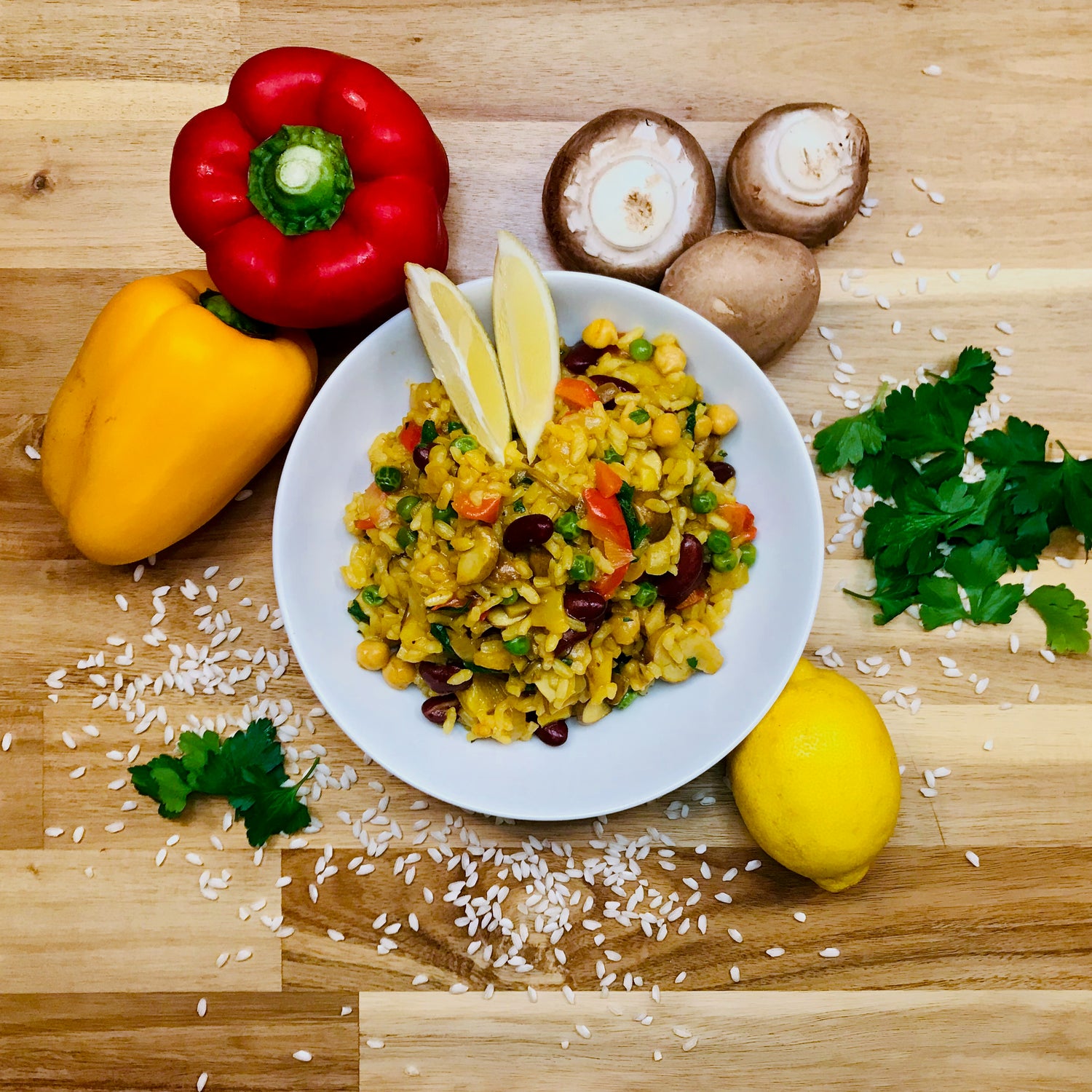
Hearty Main Courses
Vegetable Paella
This skin-friendly vegetable paella is entirely plant-based, low in histamine, and gluten-free, and tastes just as delicious as the original, even without seafood and chicken!
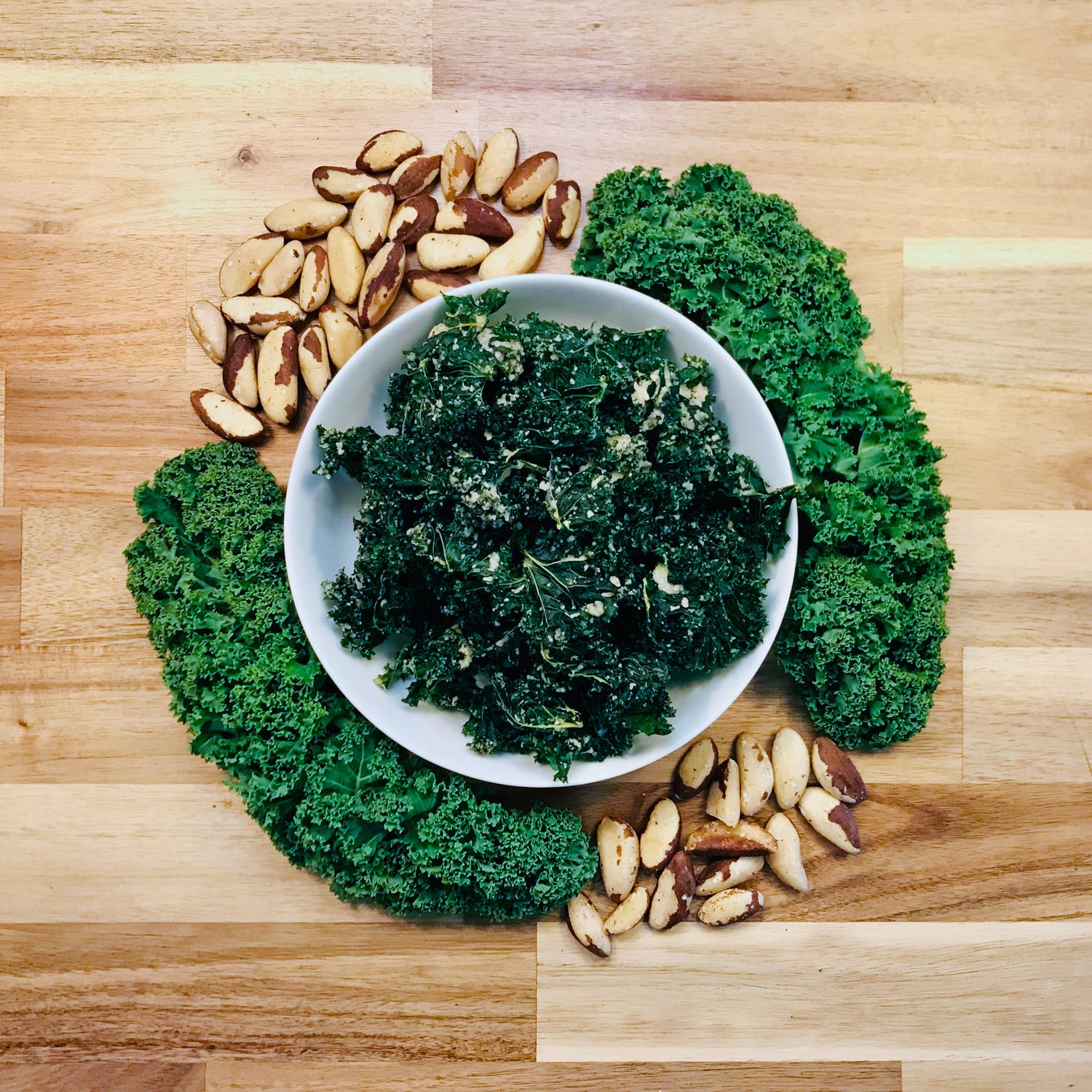
Snacks
Kale Chips
If you love snacking and want healthy options, these kale chips are ideal for you! They are loaded with essential nutrients for your skin and will leave you glowing!
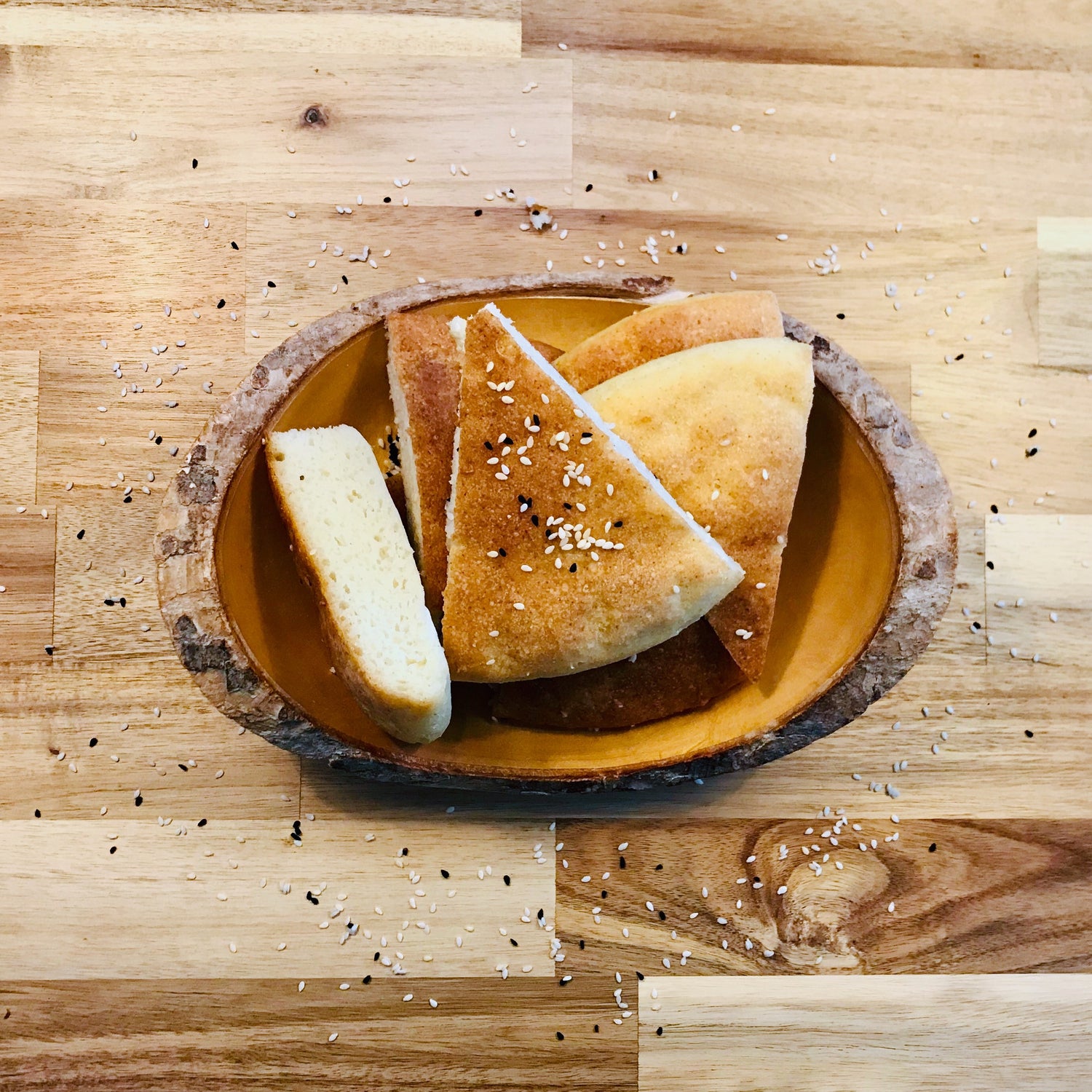
Gluten-Free Baking
Fluffy Flatbread
Are you looking for a gluten-free flatbread that's just as fluffy as the ones you'd find in Turkish markets? Then this recipe is perfect for you! Enjoy it with homemade dips or salads!
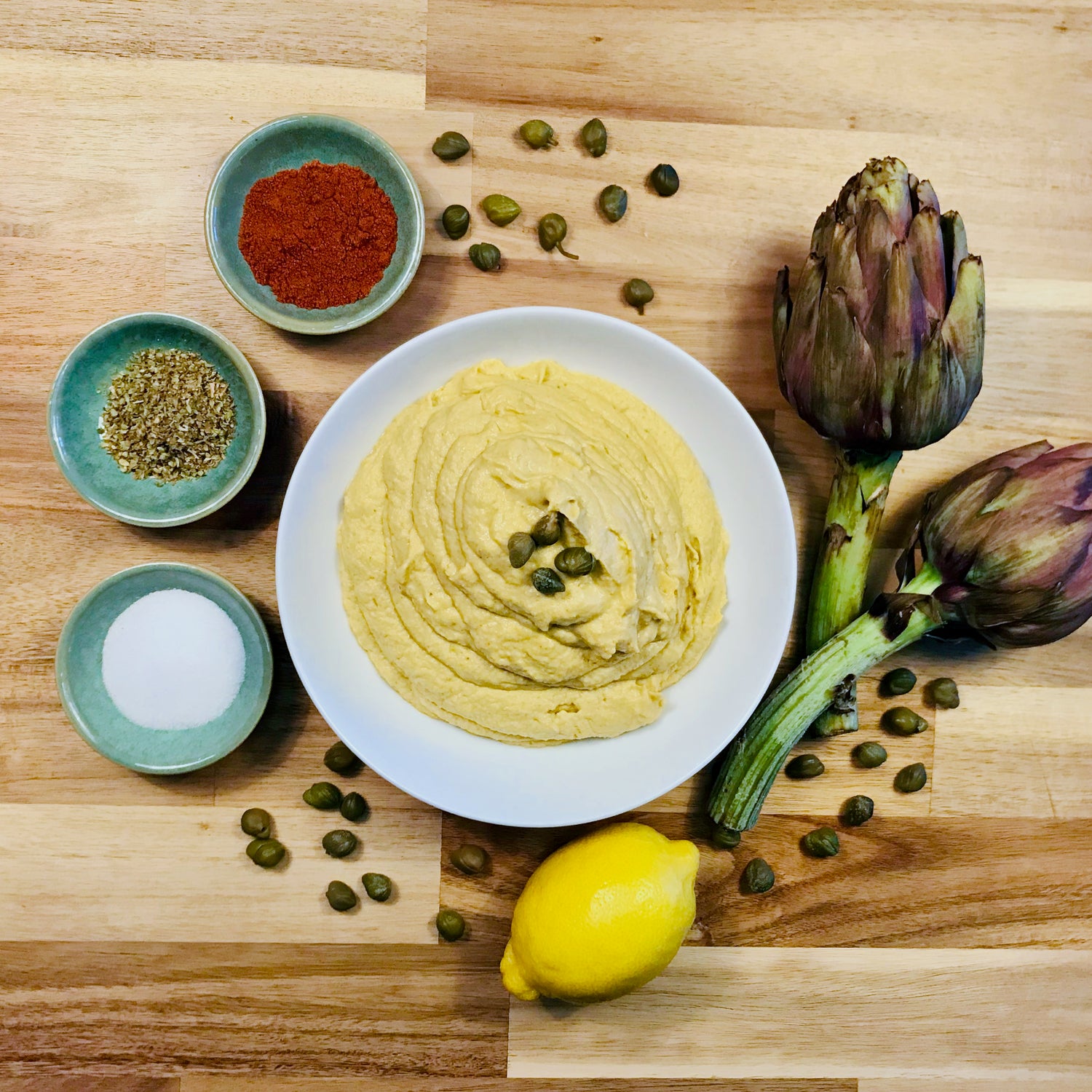
Spreads & Dips
Artichoke Spread
Artichokes are not just a Mediterranean delicacy, but also a real health booster. Enjoy this artichoke cream with homemade bread or vegetables!
Questions about the recipes:
Which ingredients are included?
Here, you'll find a comprehensive overview of the various ingredients across all categories. I've noted in parentheses how many recipes each ingredient is included in.
Vegetables:
- Artichokes (1 recipe)
- Beets (3 recipes)
- Broccoli (3 recipes)
- Capers in brine (1 recipe)
- Carrots (11 recipes)
- Cauliflower (2 recipes)
- Celeriac (1 recipe)
- Celery (3 recipes)
- Cucumbers (2 recipes)
- Fennel (2 recipes)
- Hokkaido (2 recipes)
- Kale (3 recipes)
- Mushrooms (2 recipes)
- Parsnips (4 recipes)
- Peppers (8 recipes)
- Potatoes (8 recipes)
- Red cabbage (2 recipes)
- Romaine lettuce (2 recipes)
- Sweet potatoes (1 recipe)
- White cabbage (1 recipe)
- White onions (18 recipes)
- Zucchini (1 recipe)
Fruits:
- Apples (9 recipes)
- Blueberries (5 recipes)
- Cranberries (1 recipe)
- Dates (5 recipes)
- Grapes (3 recipes)
- Mangoes (4 recipes)
- Nectarines (1 recipe)
- Persimmons (1 recipe)
- Pomegranates (3 recipes)
- Sour cherries (1 recipe)
Grains, pseudo-grains, and flours:
- Corn, corn flour, corn semolina (2 recipes)
- Gluten-free oat flakes (4 recipes)
- Millet, golden millet, millet flakes (3 recipes)
- Quinoa (3 recipes)
- Rice, risotto, basmati (2 recipes)
- Tapioca starch (5 recipes)
- Tigernut flour (2 recipes)
My homemade gluten-free flour mix consists of light rice flour, millet flakes, tapioca starch, guar gum, and psyllium husk. The flour mix is included in 3 recipes.
Legumes:
- Chickpeas (3 recipes)
- Green beans (1 recipe)
- Green peas (3 recipes)
- Kidney beans (1 recipe)
- Lentils, mountain lentils, yellow lentils, red lentils (4 recipes)
- Mung beans (7 recipes)
- White beans (2 recipes)
More on this in the sections "Why do the recipes contain legumes?" and "How can I digest legumes better?"
Oils:
- Coconut oil (21 recipes)
- Flaxseed oil (8 recipes)
- Olive oil (8 recipes)
Plant milks:
- Coconut milk (9 recipes)
- Rice milk or oat milk, gluten-free (5 recipes)
Seeds and nuts:
- Almonds, tolerated in small amounts for HIT (2 recipes)
- Brazil nuts (3 recipes)
- Chia seeds (3 recipes)
- Golden flaxseeds (4 recipes)
- Pistachios (2 recipes)
- Psyllium husks (6 recipes)
- Pumpkin seeds (3 recipes)
- Sesame, white seeds, and tahini are tolerated in small amounts for HIT (3 recipes)
- Shredded coconut (2 recipes)
For seasoning:
- Agave syrup (14 recipes)
- Basil (2 recipes)
- Bay leaf (2 recipes)
- Beetroot powder, optional (1 recipe)
- Black cumin seeds (2 recipes)
- Caraway (11 recipes)
- Cardamom (1 recipe)
- Cinnamon (6 recipes)
- Cloves (1 recipe)
- Coriander (7 recipes)
- Dill (2 recipes)
- Fennel seeds (1 recipe)
- Fresh ginger (8 recipes)
- Freshly squeezed lemon juice (more information in the "Do the recipes contain citrus fruits?" section)
- Garlic cloves, optional (1 recipe)
- Green Veltliner (1 recipe)
- Horseradish, optional (1 recipe)
- Lovage (1 recipe)
- Marjoram (2 recipes)
- Mint (2 recipes)
- Oregano (2 recipes)
- Parsley (9 recipes)
- Smoked paprika (3 recipes)
- Sumac (2 recipes)
- Sweet paprika (6 recipes)
- Thyme (1 recipe)
- Turmeric (4 recipes)
My homemade Ayurvedic spice blend contains caraway, fennel seeds, cloves, cardamom, coriander, turmeric, paprika (sweet and smoked), cinnamon, and lemongrass. It is used in 9 recipes.
My homemade soup seasoning contains carrots, celeriac, parsnips, snow-white onions, lovage, parsley, and salt. It is used in 13 recipes.
For baking:
- Baking powder (3 recipes)
- Baking soda (3 recipes)
- Dried yeast (more on this in the "Do the recipes contain yeast?" section)
- Xylitol (1 recipe)
Why don’t the recipes contain milk or other animal products?
This cookbook does not include any dairy or other animal-derived products. It is completely plant-based. Why is that?
Cow's milk is initially used to feed calves and contains a relatively high level of growth hormones. These hormones promote excessive cell division, sebum production, and androgen production in the human body, which can cause skin problems.
Additionally, dairy products contain the milk sugar lactose, which one in five Germans cannot tolerate and cannot digest due to a deficiency in the enzyme lactase. While cow's milk allergy is more common in infants, adults are especially affected by lactose intolerance, as lactase activity continues to decline in affected individuals throughout their lives for genetic reasons. Typical symptoms of lactose intolerance include a bloated abdomen, gas, lower abdominal pain, diarrhea, nausea, vomiting, and sometimes constipation. Lactose intolerance and milk allergy can also contribute to skin conditions such as acne, neurodermatitis, rosacea, and dermatitis.
Additionally, highly processed, fermented, and long-stored dairy products like cheese, yogurt, and curd contain high levels of histamine, which can cause skin redness, swelling, itching, hives, and other skin reactions.
Furthermore, many consumers of animal products from conventional factory farming are unaware that they unknowingly ingest antibiotics daily through their food. About 73% of all antibiotics sold worldwide are used for animals, not for treating sick humans. Testing showed that 35 out of 44 wastewater samples from slaughterhouses contained antibiotic-resistant germs. In 8 of these samples, resistance to the critical antibiotic colistin was even found. The human gut microbiome plays a crucial role in our overall health, affecting our skin and entire body. Antibiotics can kill our healthy gut bacteria and disrupt the balance of the gut flora.
In addition to antibiotics, hormones are also used in factory farming, for example, to synchronize the reproductive cycle of sows or to speed up weight gain in animals. Sex hormones consumed through animal products can disrupt your body's very sensitive hormonal balance, leading to hormonal acne and other hormone-related health issues.
Furthermore, most farm animals are not kept in a manner that matches their natural behavior: only 1% of pig enclosures provide access to a run. About 4% of the stalls have outdoor climate barns. In 2020, only 0.8% of all pigs lived on organic farms. Every year, a hundred million animals are killed without their meat being consumed. They die during fattening or are slaughtered and discarded for economic reasons. These statistics clearly show that animals in conventional factory farming experience very high stress levels. The stress hormones in animals are transferred to humans when they eat meat. These hormones can trigger the sebaceous glands and have a pro-inflammatory effect on the skin, potentially worsening acne and other skin conditions.
Fish is often considered healthier than meat because some types, like salmon, mackerel, and herring, contain anti-inflammatory omega-3 fatty acids. Due to fish's acid forming nature and the potential for high levels of heavy metals and microplastics in marine fish, it’s more advantageous to get omega-3 fatty acids from plants.
Why don‘t the recipes contain gluten?
Gluten is a protein found in cereal grains like wheat, spelt, rye, green spelt, emmer, einkorn, kamut, and barley. In the cookbook, only gluten-free cereals and pseudo-cereals like rice, corn, millet, and quinoa are used. Oats are naturally gluten-free but can be contaminated with gluten during harvesting and processing. However, gluten-free oats are also available in stores, for example, from Bauckhof.
Do the recipes include sugar and carbohydrates?
The recipes are high in natural carbohydrates from fruits and vegetables and contain no industrial sugars or gluten-based flours.
Are these recipes high in protein?
In the cookbook, only legumes, seeds, and nuts that are low in biogenic amines are used (i.e., no soy). Since the cookbook contains no animal products, the dishes are not particularly high in protein but are rich in carbohydrates from natural sources like fruits and vegetables. Each dish includes nutritional information for the macronutrients per serving.
Do the recipes include seeds and nuts?
In the cookbook, only nuts, seeds, and kernels that are tolerated by people with histamine intolerance are used. These include Brazil nuts, pistachios, coconuts, flaxseed, chia seeds, and pumpkin seeds.
Among various seeds and kernels, chia seeds, pumpkin seeds, and flaxseeds are especially well tolerated because they contain substances like quercetin that lower histamine. The enzyme polyamine oxidase, which breaks down biogenic amines in the body, has also been found in many seeds. However, to gain the benefits of these enzymes, the seeds should be eaten raw.
Many types of nuts, such as walnuts, have the highest serotonin content and should be avoided by individuals with histamine-related skin conditions like acne, rosacea, and neurodermatitis.
Why don't the recipes include peanuts?
Botanically, peanuts are legumes, not nuts, but they are also high in biogenic amines and can be intolerable. According to a Swiss study, over 20% of tested individuals reacted sensitively to peanuts. They are among the most common food allergy triggers. That's why the recipes in this cookbook do not contain peanuts.
Why are legumes part of the recipes?
Legumes are an essential part of a vegan diet, providing a high-quality source of protein. They are filling and sustaining due to their high fiber and low calorie content. However, there is no doubt that the saying "A note with every bean" is true. Legumes can be hard to digest and may cause feelings of fullness, flatulence, cramps, and bowel issues in people with weak digestion.
Legumes contain different levels of dopamine, tyramine, serotonin, and other biogenic amines. However, most are well tolerated, except for soybeans, which are especially high in amines, as long as they are easily digested. In the cookbook, only legumes with low levels of biogenic amines are used. Soya is consistently avoided.
How can I better digest legumes?
If you lack experience eating legumes or have had digestion issues before, here are some tricks and tips to make legumes easier to digest.
- Legumes should be eaten regularly in small amounts at first, giving your gut flora time to adapt gradually. The high fiber content of legumes can be challenging initially, but our gut flora is adaptable and capable of adjusting. If you're not used to legumes, start with small servings and slowly increase your intake.
- Peeled legumes, such as red and yellow lentils and peeled, halved mung beans (mung dal), are easier to digest because they contain less fiber. Make sure to wash peeled legumes thoroughly under running water until the water runs clear before cooking.
- To reduce the antinutrients in legumes, such as lectins, phytic acid, and oxalic acid, which can interfere with the absorption of essential nutrients, all unpeeled legumes should be soaked overnight before cooking and then simmered for several hours. Biogenic amines are heat-resistant, but they also leach into the cooking water, which can significantly decrease their levels. The soaking and cooking water should always be discarded. If you buy pre-cooked legumes in jars or cans, most of the biogenic amines will have transferred into the canning liquid, so these legumes should be thoroughly rinsed.
- Unpeeled organic legumes like lentils or mung beans can be sprouted to make them easier to digest. They can even be eaten raw afterward.
- Spices like caraway, ginger, fennel, and coriander aid digestion and can be eaten with legumes, enhancing their flavor.
- Additionally, legumes can be paired with low-amine vegetables like potatoes or carrots, and/or rice to keep the dish's overall amine content low.
- You can eat legumes at lunchtime when your digestive power is strongest. Only consume one concentrated source of protein per meal as you gradually build up your digestive strength.
- Legumes can be eaten with a little lemon (rich in vitamin C) to help the body absorb the iron they contain more effectively.
- Legumes are easier to digest when they are freshly prepared. Avoid ready-made products made from legumes. These include, for example, meat substitutes, as well as flours or pasta made with processed legumes that haven't been soaked but are ground in their dried form, making these products especially difficult to digest. If you want to include meat substitutes made from legumes, consider pea protein, as it is low in allergens and better tolerated than wheat or soy protein.
Why don't the recipes include soy?
Soya holds a special place among legumes. It is one of the few plant-based foods that contains complete protein with all essential amino acids. That's why it is so popular among vegans and is used in plant-based milk, yogurt, as a basis for plant-based meat substitutes, and in tofu, among other applications. In ready meals, canteen food, baked goods, and sweets, soy extracts are often used as binders, flavor enhancers, and stabilizers, and are nearly impossible to identify. However, the soybean has by far the highest content of biogenic amines among all legumes. Soy could be one of the main causes of acne and other skin issues, as it appears in many foods. Therefore, it's worth avoiding it to see if it positively affects your skin health.
Additionally, the proteins in soy can trigger allergies, as they resemble those found in the pollen of birch, alder, and hazel. People affected report experiencing symptoms such as itching, redness, hives, or flare-ups of neurodermatitis after consuming soy and soy products. It is unclear whether this reaction is due to the high amount of amines in soybeans or to the pollen-like proteins they contain.
In Ayurveda (Traditional Indian Medicine), soybeans are avoided for various reasons. On one hand, ready-made products in Ayurveda are generally considered tamasic, meaning tired and lacking in nutrients, as they contain few essential nutrients. But even fresh beans, soybeans are considered difficult to digest, which is why you won't find any dishes with soy products in the cookbook.
Why don't the recipes include tomatoes?
Tomatoes have a relatively high level of histamine, tyramine, tryptamine, and serotonin. As they ripen, the serotonin content keeps increasing. That's why tomatoes are often poorly tolerated by people with histamine intolerance, and you’re unlikely to find recipes with tomatoes in the cookbook.
Do the recipes include citrus fruits?
Citrus fruits do not contain histamine, but they have other biogenic amines and can make it harder to break down histamine.
Juices made from citrus fruits are problematic because they are usually consumed as pure liquids, and the biogenic amines they contain cannot be absorbed by dietary fiber.
Additionally, juices made from citrus fruits that have been stored for a long time are often already slightly fermented, which is another issue linked to histamine intolerance.
In the cookbook, only freshly squeezed lemon juice is used in small amounts for seasoning. Here, lemon juice is combined with high-fiber ingredients, making it more easily tolerated.
Freshly squeezed lemon juice in small amounts is the preferred method if vinegar cannot be used because of its high histamine levels.
Do the recipes include mushrooms?
Mushrooms are high in protein and contain the essential amino acid histidine, which produces histamine when broken down by microbes. Therefore, mushrooms should be used with extreme caution if you are sensitive to histamine. Different mushroom varieties have varying amounts of histidine. The highest is porcini mushrooms, with 220 mg of histidine per 100 g. As mentioned earlier, porcini mushrooms and chanterelles typically have a high histamine content.
Mushrooms, such as king oyster, oyster, shiitake, and portobello mushrooms, are usually well-tolerated when fresh. It’s worth noting that they are often not stored refrigerated in the supermarket, making it unclear how long they have been on the vegetable shelf. Since mushrooms have a short shelf life, it's likely they are still relatively fresh in the store, but maintaining peak freshness is crucial for your skin health. Check their freshness before buying, consume them on the day of purchase, or store them in the refrigerator for as short a time as possible, ideally at a maximum of 4 °C. Fresh mushrooms should feel firm and be resilient under pressure; they should not be greasy or weeping.
Additionally, 80% of the amines were lost during cooking when examining mushrooms. Therefore, it is advised not to eat mushrooms raw but to simmer them for at least 10-15 minutes. Cooked mushrooms from jars or cans have been studied and are generally found to contain only small amounts of biogenic amines. These are processed from freshly harvested ingredients and can be stored properly without spoiling.
In my recipes, I only use mushrooms that are either fresh or from a jar.
Do the recipes include yeast?
The question of whether yeast is tolerated in histamine intolerance or not is debated due to varying study results. In a 1969 study, histamine was found in various yeast extracts. However, later studies have shown that baker's yeast does not contain histamine. As a result, yeast bread is generally well tolerated.
In the cookbook, only one recipe uses baker's yeast. Otherwise, the cookbook does not include yeast.
Yeast is commonly added to vegetable broths to boost flavor. The cookbook features a recipe for homemade soup seasoning that doesn't include yeast extract.
Do the recipes include alcohol?
Alcohol is a fermented ingredient that should generally be avoided in cases of histamine intolerance. However, there are significant differences among various types of alcohol. For example, red wine contains much more histamine than white wine or beer. There are also distinctions between different kinds of beer.
In the cookbook, only one recipe includes a low-histamine white wine variety, which can be used optionally.
Why don't the recipes include algae?
In cases of histamine intolerance, brown algae, green algae, red algae, and seaweed, including kombu, nori, and wakame, should be avoided because these seaweeds have been found to contain high levels of histamine and other biogenic amines. Nori sheets are primarily used in making sushi. Unfortunately, no seaweeds are suitable for those with histamine intolerance. Therefore, no seaweed is included in this cookbook. If you are vegan and rely on seaweed for iodine, consider using iodized table salt instead.
However, the microalgae Chlorella and Spirulina do not contain histamine. Studies have shown that spirulina can even inhibit the release of histamine from the nervous system and contains a variety of ingredients essential for histamine-degrading enzymes. Spirulina is available in tablet form and is especially recommended for people with histamine intolerance. When it comes to chlorella and spirulina, however, it is important to only consume organic algae. Algae absorb heavy metals, which can give them a strong detoxifying effect in the body. If the algae are of poor quality, they may have already absorbed heavy metals during cultivation and could burden our bodies with these toxins.
Do the recipes include spicy vegetables and spices?
Spicy vegetables are low in histamine but should be avoided in cases of histamine intolerance, as they can irritate the intestines and trigger the release of histamine from the intestinal mucosa, which then circulates and may cause symptoms.
Spicy vegetables include all onion and leek family plants such as garlic, wild garlic, chives, leeks, spring onions, red onions, and regular onions. The mild and sweet snow-white onion is the only exception and is well tolerated even by people with amine sensitivity. Spicy vegetables also include arugula, mustard seeds, and spicy radishes. Fresh ginger is tolerated in moderation. That's why only snow-white onions and fresh ginger are used in the cookbook.
Hot spices include pepper, chili, cumin, and fenugreek. Cumin can be easily replaced with the milder, true caraway.
The spice blends curry and garam masala, which are often used in Asian and Indian cuisine, contain many or even all of these hot spices that can trigger the release of histamine in the body. That is why my spice blend in the cookbook includes compatible spices, which I use for curries and Asian dishes. Vegetable broth also often contains incompatible ingredients such as yeast, pepper, and onions. In the cookbook, you will find a basic recipe for homemade soup seasoning.
The following spices can be used freely if you're sensitive to amines: basil, savory, cardamom, coriander, caraway (note: no cumin), turmeric, lovage, marjoram, sea salt or rock salt, cloves, oregano, sweet paprika, parsley, peppermint, rosemary, sage, black cumin, thyme, juniper berries, and cinnamon. This list might seem overwhelming at first, but after a few recipes, you'll memorize them and be able to experiment with flavors! The cookbook only includes spices that are safe for those with histamine intolerance.
Are these recipes time-consuming?
Most recipes can be prepared in 20-40 minutes. However, some recipes involve waiting times, such as when germinating fresh sprouts. It might take more time if you don't have many ingredients at home and need to go to the health food store for them. It's best to buy all the ingredients that are only available at the health food store but can be stored well, like millet flakes, rice flour, and so on, at once. You can find the exact ingredients listed above in the paragraph "What ingredients exactly are included?".
Are the recipes also tolerated in cases of salicylate intolerance?
Unfortunately, many recipes in the book are not suitable for salicylate intolerance because they include ingredients such as parsnips, broccoli, blueberries, apples, or cherries (see "What ingredients are included?").
Do you have any additional questions about the recipes inthe cookbook?
I'm happy to answer any questions you have about the recipes in the cookbook. Feel free to contact me via WhatsApp or email, and I will get back to you as soon as possible!
Whatsapp: +49 15788720423
Email: info@food-for-your-skin.com


